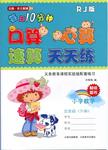��Ŀ����
��������������ѧ��һ��Ӣ��������Tom��Ϊ�˷������顢�ύ���Ѳ��˽��й��ķ������飬
��ƻ��������ȥ���ϴ������������Ρ����������Ҫ��дһƪ����Ѱ���й�ѧ����Ϊ���λ�飺
1��ʱ�䣺 2��2 1��-2��26�գ�
2�����ð��Ҫ��
3����ϵ��ʽ���绰��13012345678; E-mail:tommy1999@163.com.
ע�⣺
1������100���ң�
2�����ʵ�����ϸ�ڣ���ʹ�������
3����ͷ�ͽ�β�Ѹ������������ܴ�����
I'm Tom, a British exchange student at Yucai High School.
Looking forward to meeting you.
I��m Tom, a British exchange student at Yucai High School. I am planning to take a six-day tour of Dali and Lijiang, Yunnan Province, starting from February 21.
I��d like to find an outgoing and enthusiastic companion from a Chinese high school, who has a good knowledge of Chinese culture, especially about Yunnan local minorities. Besides, it would be nice if you have some experience in traveling. Above all, your good command of English will make sure free communication between us can happen. I sincerely hope we can relax, enjoy ourselves, make friends as well as improve our cross-cultural communication skills during this experience.
If anyone is interested, please contact me at 13012345678 or send me an E-mail to tommy1999@163.com.
Looking forward to meeting you!
������������һƪ�����д������Ҫ˵���Լ����ð��Ҫ���Լ�ϣ������λ���ܹ��õ�һЩ�ջ���Ŀ�Ѿ������������ݣ�д��ʱҪע���ʵ��������ݣ��Ա�֤���µ������ԡ��ڶ��ε�һ�䡱 I��d like to find an outgoing and enthusiastic companion from a Chinese high school, who has a good knowledge of Chinese culture,��ʹ���˶���Ӿ�������companion��ʹ�ñ�����ӵķḻ���в�Ρ��ڶ��ε����䡱 it would be nice if you have some experience in traveling.��������if�Ӿ䣬�����Ե�ί���������˽��ܡ�ͬʱ���������֮���á�especially������besides������above all���Ȳ�ͬ�ĸ��������ӣ��Եò��������ڶ��ε����ڶ��䣬ʹ��sincerely����really�����š��ڶ������һ�䡰I sincerely hope we can relax, enjoy ourselves, make friends as well as improve our cross-cultural communication skills during this experience.��������as well as �����������������ӣ��ȹ���and�����Ӹ��ã����˸о���������滯�����Ҫ����ϵ��ʽд�������������ľ������ˡ�
���㣺��������д����

 ÿ��10���ӿ�����������������ϵ�д�
ÿ��10���ӿ�����������������ϵ�д�